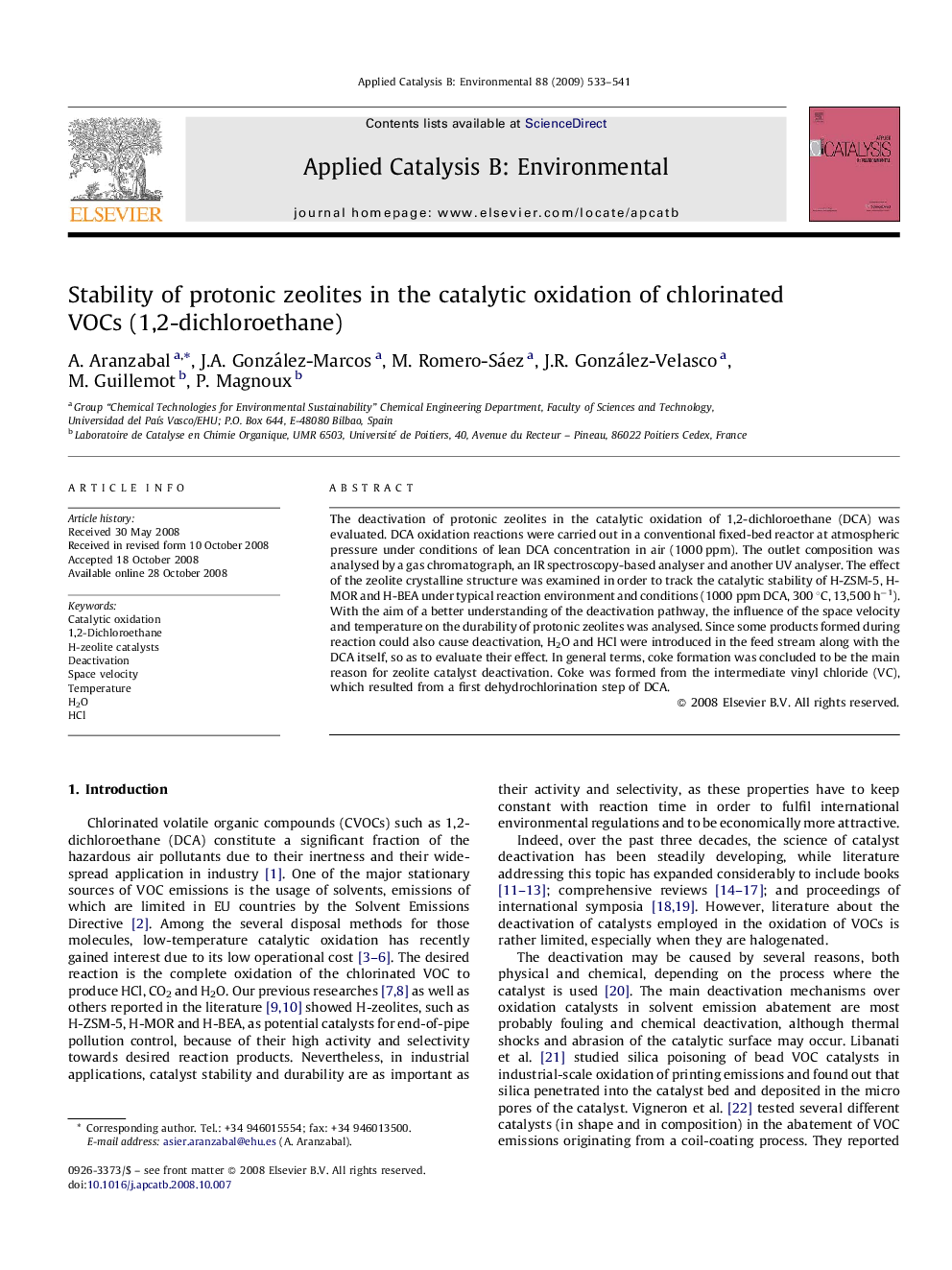| Article ID | Journal | Published Year | Pages | File Type |
|---|---|---|---|---|
| 48005 | Applied Catalysis B: Environmental | 2009 | 9 Pages |
The deactivation of protonic zeolites in the catalytic oxidation of 1,2-dichloroethane (DCA) was evaluated. DCA oxidation reactions were carried out in a conventional fixed-bed reactor at atmospheric pressure under conditions of lean DCA concentration in air (1000 ppm). The outlet composition was analysed by a gas chromatograph, an IR spectroscopy-based analyser and another UV analyser. The effect of the zeolite crystalline structure was examined in order to track the catalytic stability of H-ZSM-5, H-MOR and H-BEA under typical reaction environment and conditions (1000 ppm DCA, 300 °C, 13,500 h−1). With the aim of a better understanding of the deactivation pathway, the influence of the space velocity and temperature on the durability of protonic zeolites was analysed. Since some products formed during reaction could also cause deactivation, H2O and HCl were introduced in the feed stream along with the DCA itself, so as to evaluate their effect. In general terms, coke formation was concluded to be the main reason for zeolite catalyst deactivation. Coke was formed from the intermediate vinyl chloride (VC), which resulted from a first dehydrochlorination step of DCA.
